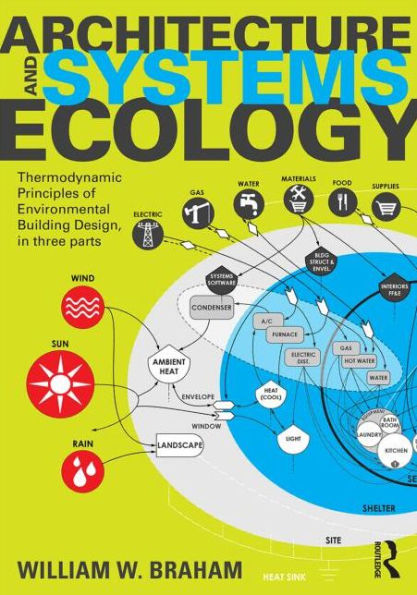5
1
9781138846074


Architecture and Systems Ecology: Thermodynamic Principles of Environmental Building Design, in three parts / Edition 1 available in Hardcover, Paperback, eBook

Architecture and Systems Ecology: Thermodynamic Principles of Environmental Building Design, in three parts / Edition 1
- ISBN-10:
- 1138846074
- ISBN-13:
- 9781138846074
- Pub. Date:
- 08/21/2015
- Publisher:
- Taylor & Francis
- ISBN-10:
- 1138846074
- ISBN-13:
- 9781138846074
- Pub. Date:
- 08/21/2015
- Publisher:
- Taylor & Francis

Architecture and Systems Ecology: Thermodynamic Principles of Environmental Building Design, in three parts / Edition 1
$77.99
Current price is , Original price is $77.99. You
$77.99
Temporarily Out of Stock Online
Temporarily Out of Stock Online
77.99
Out Of Stock

Product Details
| ISBN-13: | 9781138846074 |
|---|---|
| Publisher: | Taylor & Francis |
| Publication date: | 08/21/2015 |
| Edition description: | New Edition |
| Pages: | 276 |
| Product dimensions: | 6.88(w) x 9.69(h) x (d) |
About the Author
From the B&N Reads Blog
